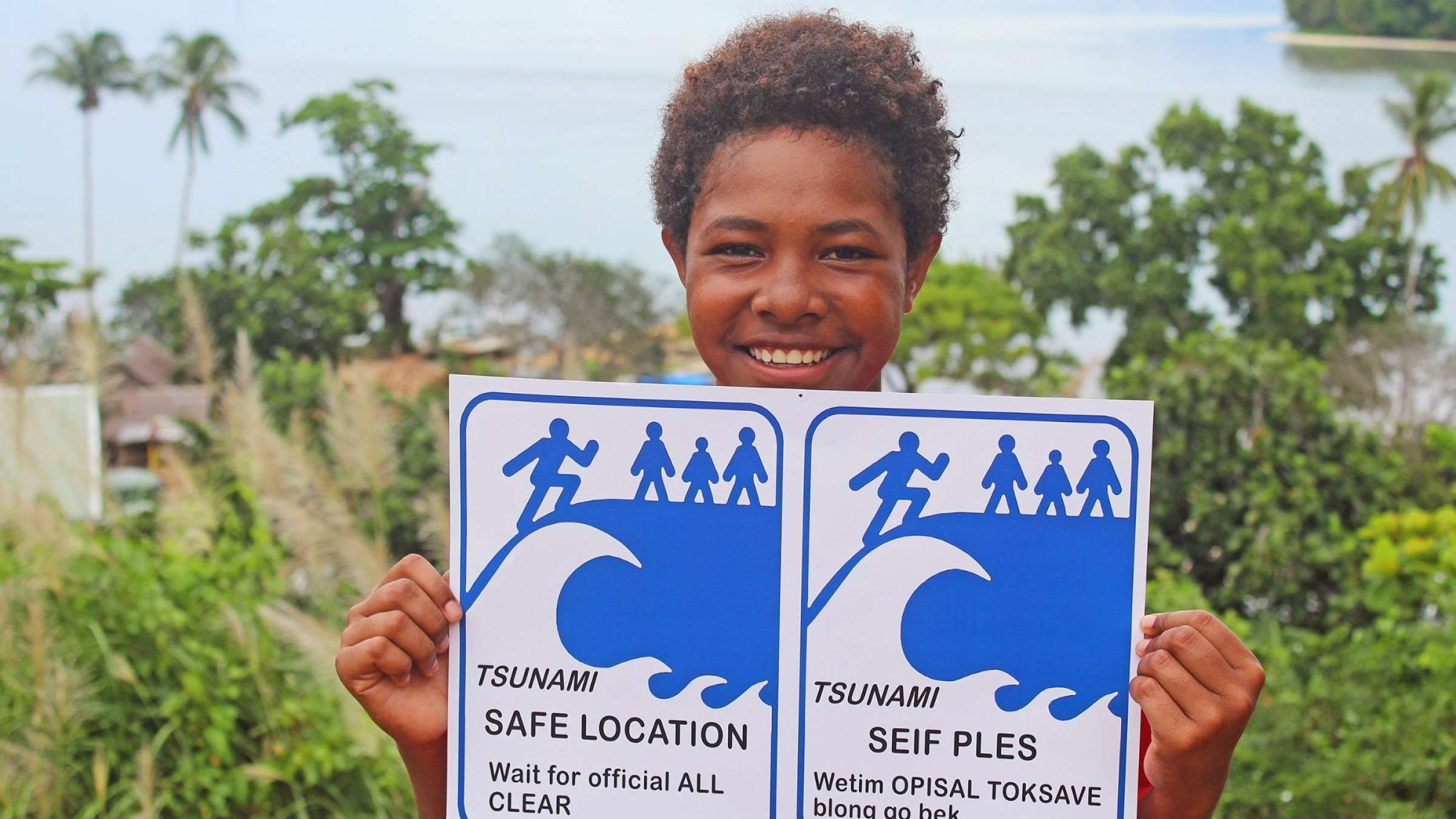UNDRR chief marks World Tsunami Awareness Day

The Secretary-General's Special Representative for Disaster Risk Reduction's message on World Tsunami Awareness Day
Earlier this year we marked the 10th anniversary of the Great East Japan Earthquake and Tsunami.
It was a solemn day of remembrance for the 18,400 people who died or are still missing because of that catastrophe.
It also brought home the importance of memorializing such experiences to avoid the lessons learned being forgotten and a return to business as usual.
Tsunamis remain the deadliest of all sudden onset natural hazards and they expose shortcomings in the built environment with deadly precision and fatal consequences.
They are the ultimate test for risk governance and the rigor of DRR strategies when it comes to managing risks that originate in the world’s oceans and threaten the coastlines where 650 million people are exposed to tsunami risk, storms and tidal surges.
Rising sea levels and industrial pollution are all contributing to the expansion of the tsunami threat.
The UN Office for Disaster Risk Reduction is encouraged by the progress we have seen since the celebration of the first World Tsunami Awareness Day five years ago.
A growing number of communities in the Caribbean, the Mediterranean, and the territories of the Pacific and Indian Oceans have received the prestigious Tsunami Ready certification of UNESCO’s Intergovernmental Oceanographic Commission.
Perhaps nowhere epitomizes the enthusiasm for this programme better than the India State of Odisha which lost 10,000 people in a cyclone in 1999 and has since pursued a zero-casualty policy through its State Disaster Management Authority.
After a successful pilot programme in two villages, it is now rolling out the Tsunami Ready programme to over 300 coastal villages.
Signs of progress are everywhere including ISO Tsunami Ready certification for the new airport in Yogyakarta, Indonesia, a world first.
Most heartening of all is the work that is being done with the youth of climate vulnerable small island developing states in the Caribbean and across the Pacific. And I am glad to know that we will be hearing shortly from many of them who are investing their energy and scientific learning into reducing disaster risk in their own communities.
I would also like to applaud UNDP’s School Tsunami Preparedness Project which has trained over 150,000 students, teachers and school administrators in tsunami preparedness skills and evacuation drills since 2017 with the support of the Government of Japan.
Similarly, the UNESCAP Trust Fund for Tsunami, Disaster and Climate Preparedness has supported the establishment of the Indian Ocean Tsunami Warning and Mitigation System. Among its commendable activities, it has raised awareness of the near-field tsunami risk posed by the Makran sub-duction zone to countries such as Iran, Pakistan, India and Oman.
In this short address I can only offer you a flavor of the good work that is being done to raise tsunami awareness across the globe.
The UN Office for Disaster Risk Reduction encourages the inclusion, where appropriate, of tsunami risk in national and local disaster risk reduction strategies as called for by the Sendai Framework.
It will be our pleasure to hear shortly from Dr. Vladimir Ryabinin, Executive Secretary of UNESCO-IOC.
Let me say though it was wonderful to learn a few months ago that the UNESCO-IOC Assembly has decided to include a Tsunami Programme in the UN Decade of Ocean Science for Sustainable Development.
In the words of the adopted resolution, under the Safe Ocean outcome of the Ocean Decade, this provides “a once-in-a-generation opportunity” to improve tsunami detection and early warning systems.
The stated ambition of making 100% of communities at risk, prepared for and resilient to tsunamis through the implementation of the UNESCO-IOC Tsunami Ready Programme and other initiatives by 2030 is something that UNDRR welcomes and fully supports.
Until COVID19 arrived on the scene, it could be argued that nothing could focus the mind of politicians and policymakers on disaster risk like a devastating tsunami.
I am pleased to say that with the arrival of COVID-19, UNESCO-IOC developed tsunami response guidelines for each of the four regions covered by tsunami early warning systems, reviewing plans for assembly areas and evacuation shelters in light of COVID-19 physical distancing and medical isolation needs.
My view is that a community that is Tsunami Ready is also ready for many other natural and man-made hazards that can threaten us in this age of climate emergencies, ecological breakdown, and pandemics.
We need to always bear in mind that a tsunami has no season. It can strike at any time, both day and night, and often with little or no warning.
Thank you for your attention.
Is this page useful?
Yes No Report an issue on this pageThank you. If you have 2 minutes, we would benefit from additional feedback (link opens in a new window).